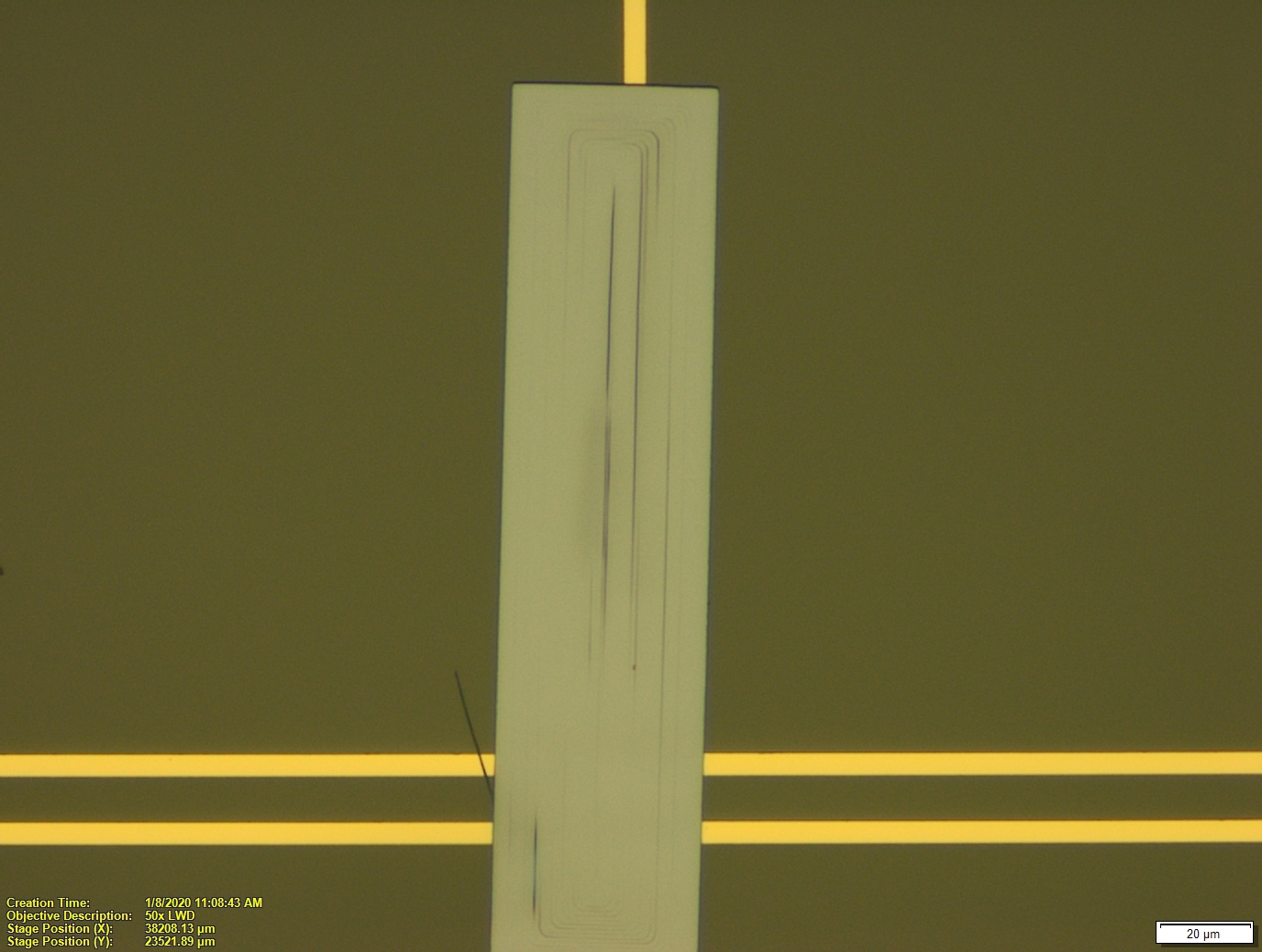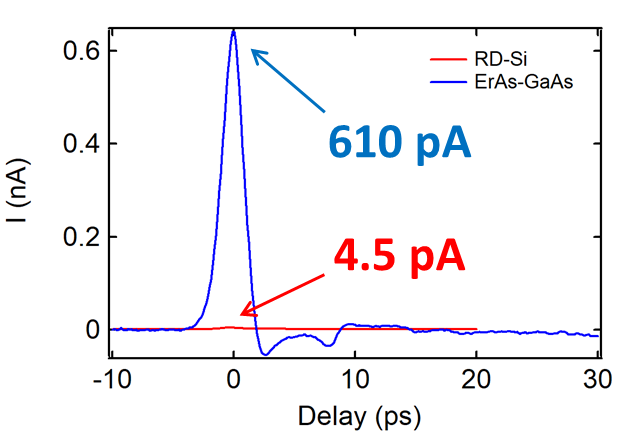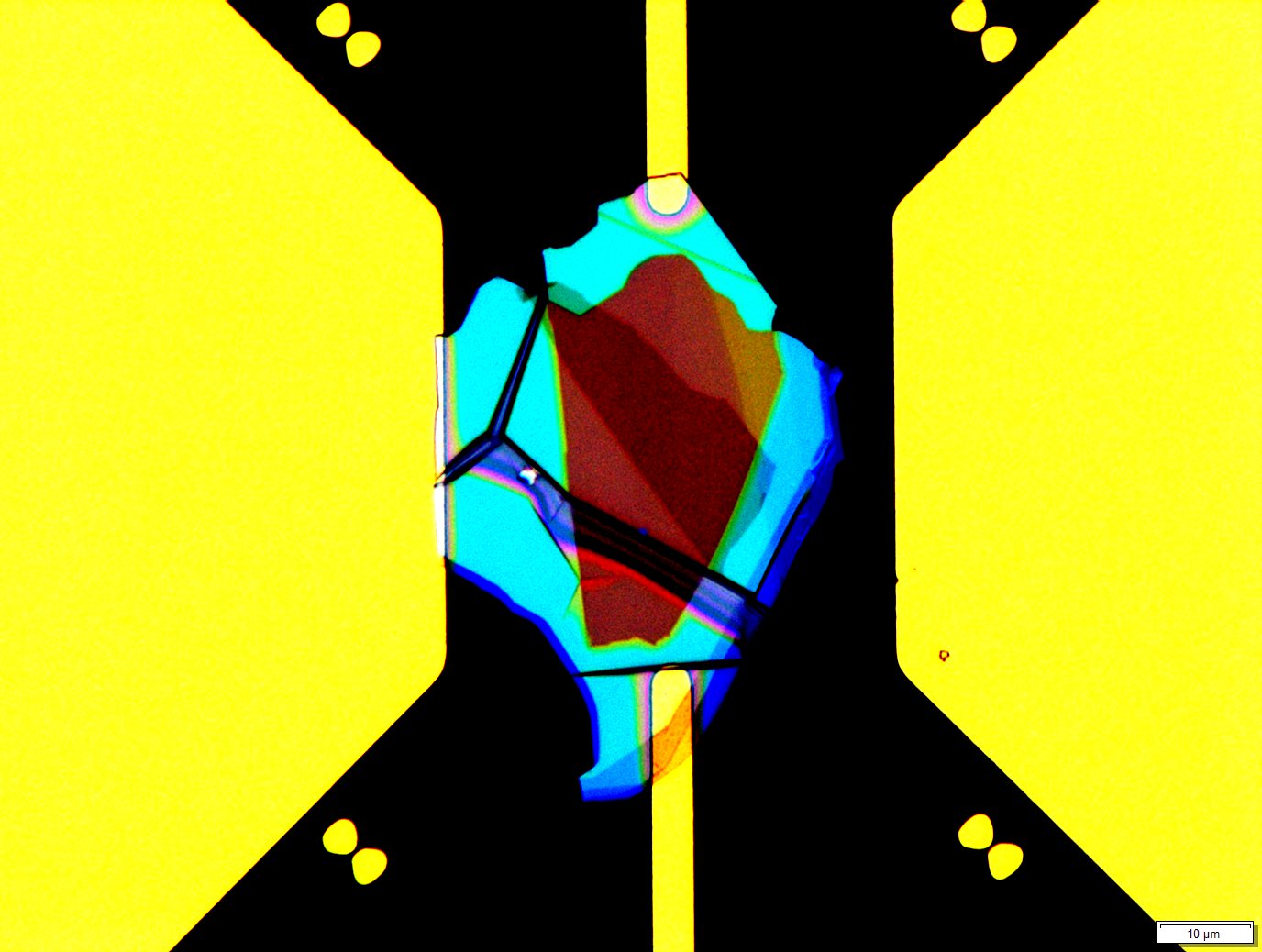
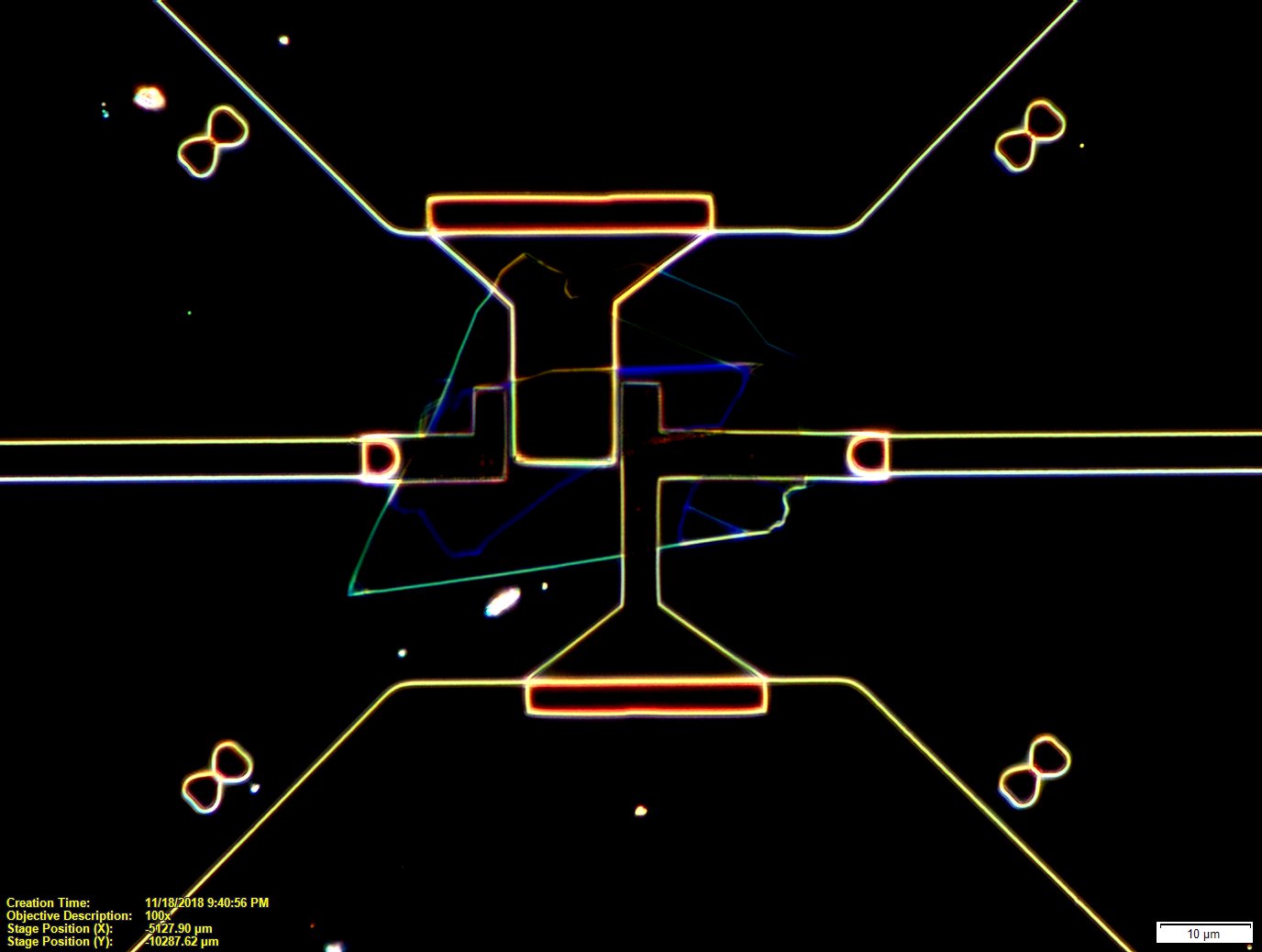
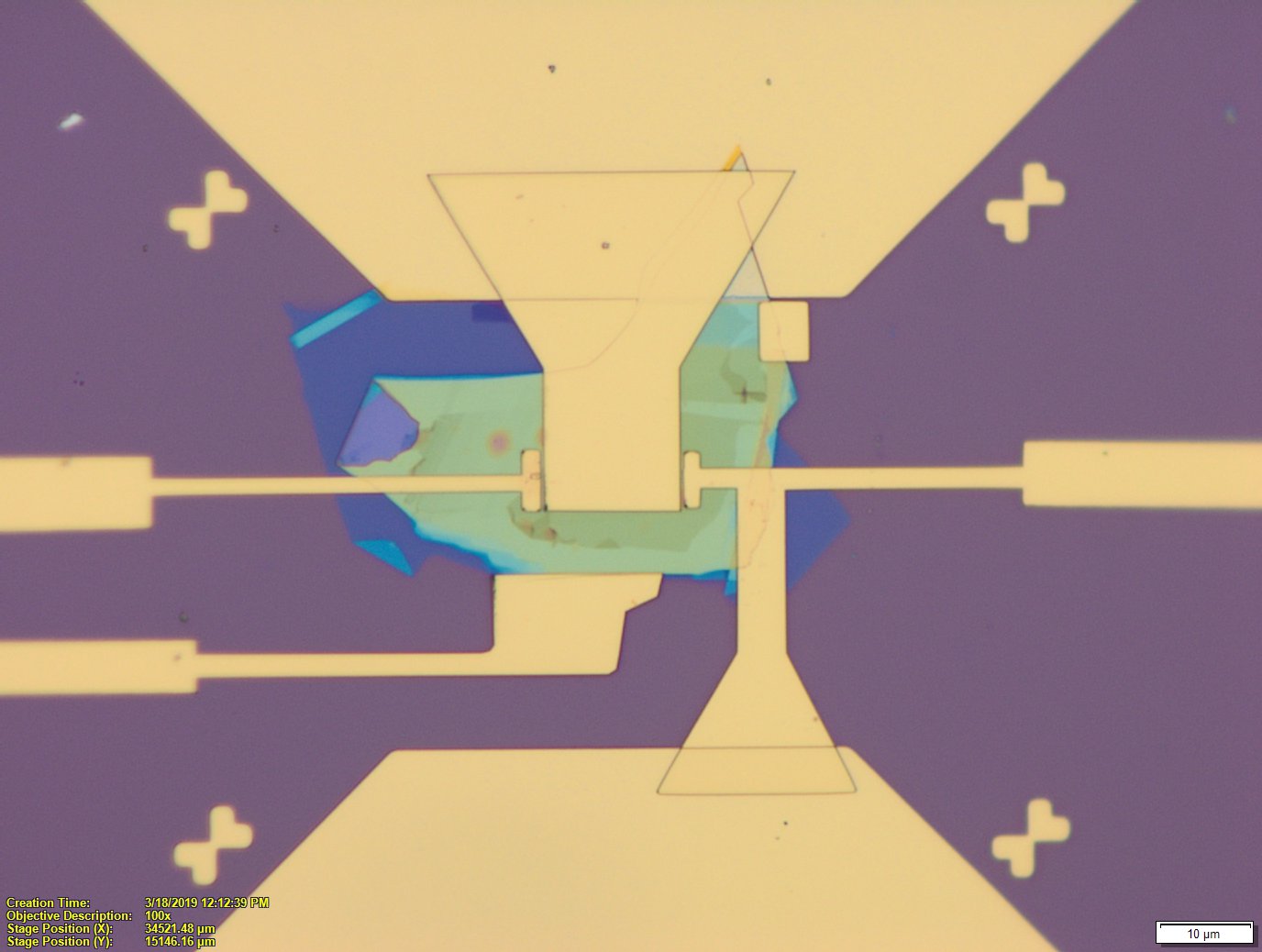
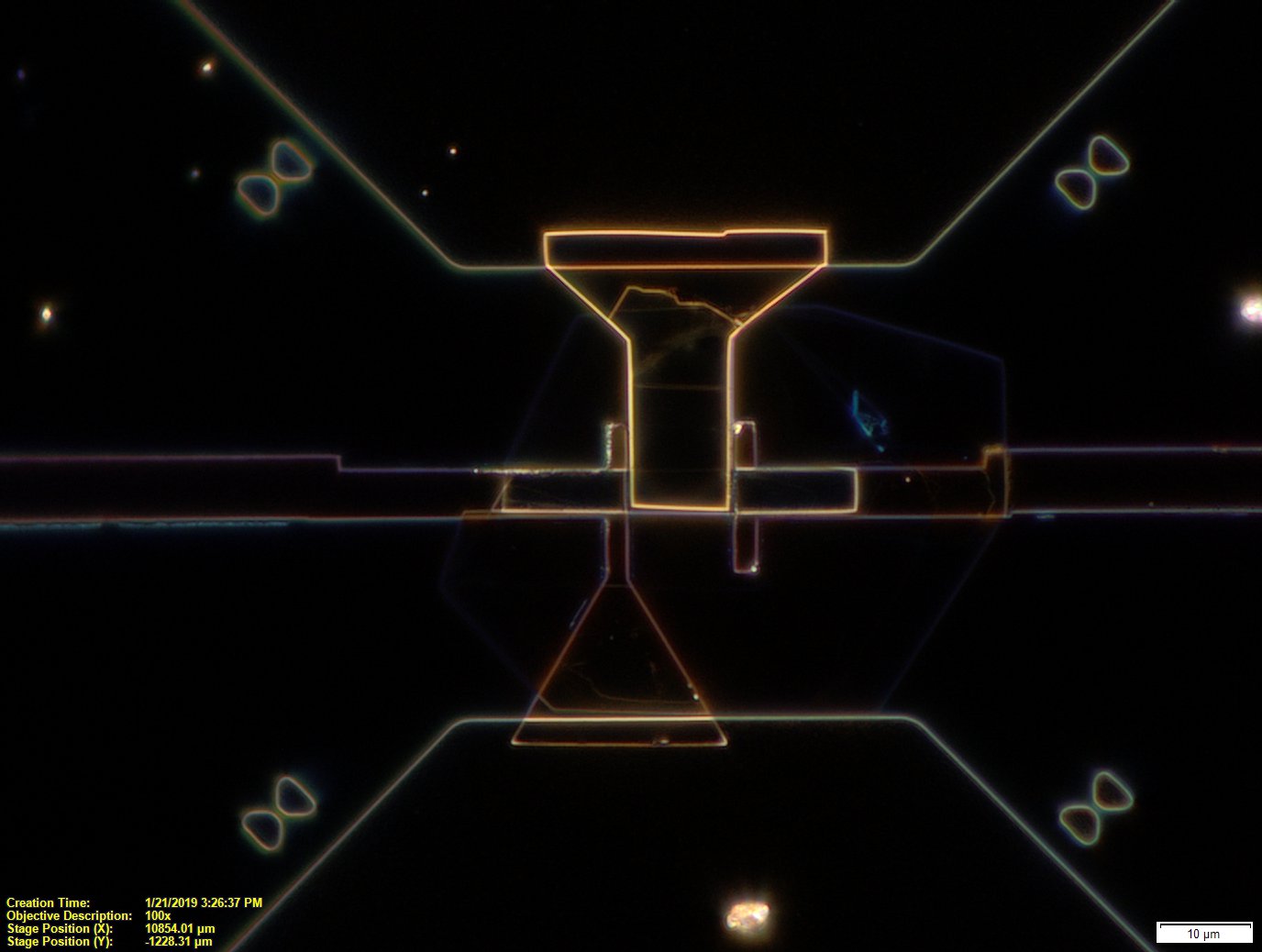
Monolayer (bilayer) graphene has proven a rich experimental platform for probing high-mobility massless (massive) Dirac Fermions. Experimental observations of Hofstader's butterfly, anyonic statistics, half integer Quantum Hall states, and now correlated electron states in magic angle twisted bilayer graphene rank amongst recent key discoveries. Most measurements are "simple" electronic transport measurements or tunneling spectrscopy measured with a highly localized STM tip. Graphene and heterostructures thereof also contain a largely unexplored phase space: dynamics! Phase resolved THz measurements of a few meV can be used to explore, say, absorbtion by the chiral Quantum Hall edge modes, the condensation of carriers into the twisted bilayer graphene supercurrent, and Floquet physics in ultraclean systems with a flatband.
There is one loooming technical limitation: the diffraction limit. Ultraclean van der Waals heterostructures (vdWh), particularly twisted ones, can only be made a few microns by a few microns. A THz photon has wavelength 0.3 mm. Even worse, a 3D THz setup's axis is propagation is the vdWh's c-axis, so even strong absorption absorbtion offers little contrast. A new set of techniques is needed to adapt the mismatched THz and sample length scales. The vdWh must made a circuit element in a THz circuit. THz circuits aren't common for a lot of reasons, incl. common molecular resonances, the post K-band slow fading background, increased loss tangent effects, difficulty in making optical / electronic THz sources, and simple Gaussian optics technicalities. We are developing a host of techniques, incl. antenna and photoconductive switch based tools for alloying our expertise in vdWh with my background and interests in THz, electromagntics, and microwave engineering.

A first class in thermal or statistical mechanics will often avoid the definition of a phase of matter. The definition is a beautiful one using order parameters and the renormalization group. One generalization of basic phases/ phase transitions greatly interests me - what about transient order parameters? Experiments in the last five years have targeted systems driven out of equilibrium by strong optical pumps. The "Cavalleri expts." are a set and style of experiments that set out to explore systems pumped from normal metal to superconductor, from trivial semimetal into topoligical Floquet gaps, and other exciting novel phases.
The community held its breath in skepticism, but has begun to exhale as more and more results have corroborated the original work. Some of the more staunch critics are not yet convinced. In addition to exploring seemingly unbound possibilities, I am interested in the deep, the unseen, the subtle, and the abstruse details of the nature of out-of-equilibrium physics that are too often swept under the rug
